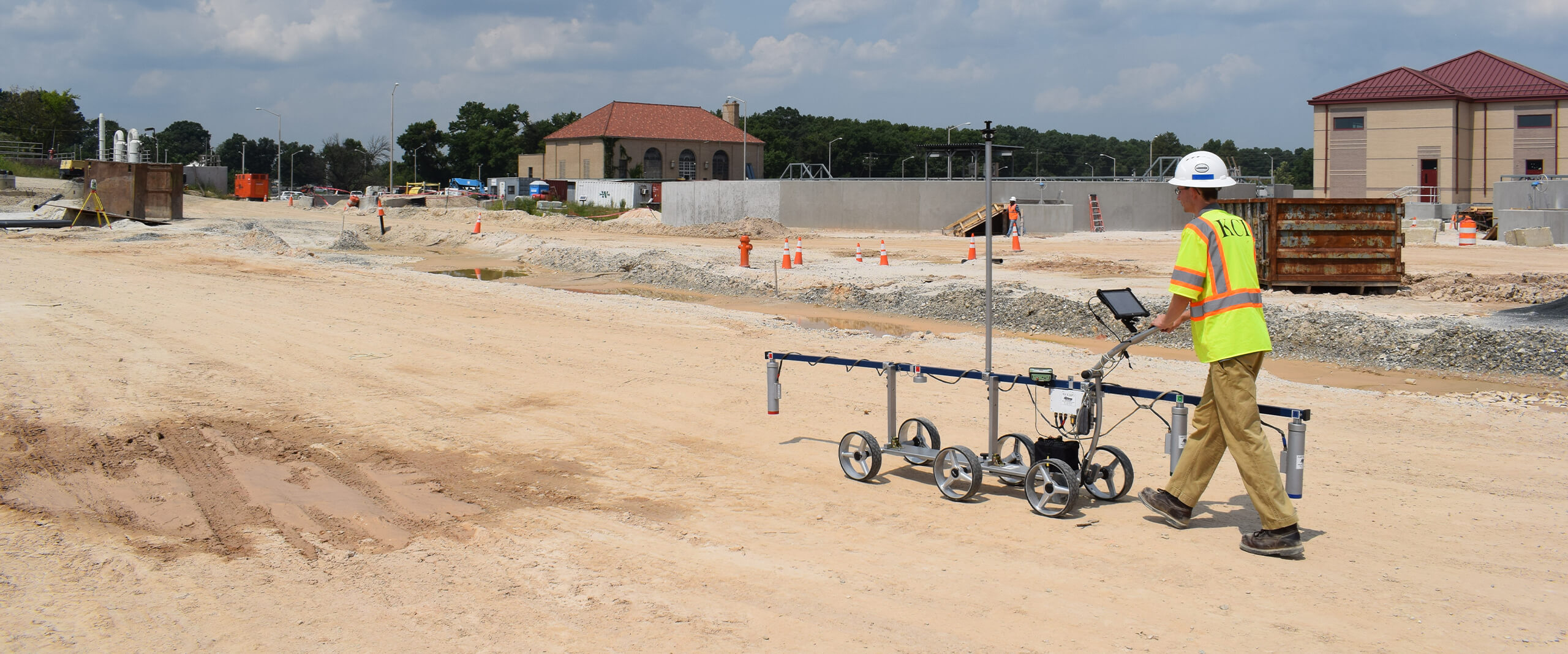How a Geotechnical Specialist Can Make Certain the Success of Your Structure Foundations
How a Geotechnical Specialist Can Make Certain the Success of Your Structure Foundations
Blog Article
A Comprehensive Summary of Geotechnical Engineering Techniques and Their Influence On Modern Civil Engineering Projects
Geotechnical engineering serves as the backbone of modern civil engineering, supplying essential methods that resolve the intricacies of subsurface problems. The interaction of dirt analysis, structure style, and cutting-edge technologies shapes the integrity and sustainability of framework jobs.
Value of Geotechnical Engineering
Geotechnical engineering acts as an essential structure for civil engineering tasks, affecting the safety and security of structures. This self-control concentrates on the habits of dirt and rock products, giving essential insights that assist the layout and building and construction procedures. By recognizing the communication between the planet and crafted structures, geotechnical engineers can assess risks linked with ground problems, such as settlement, slope stability, and liquefaction.
The importance of geotechnical design expands past mere structural honesty; it plays an important duty in ecological protection and sustainability. Properly implemented geotechnical assessments guarantee that projects decrease their ecological footprint and abide by regulative requirements (geotechnical companies in south africa). Geotechnical design is instrumental in website option, allowing designers to determine appropriate locations for building and construction that alleviate possible dangers.
In addition, geotechnical engineering cultivates advancement in civil engineering by advancing techniques for ground enhancement, foundation layout, and excavation. The self-control's contributions are crucial in attending to challenges positioned by varying dirt problems, hence assisting in reliable and safe facilities development. Generally, the significance of geotechnical engineering is vital in guaranteeing that civil design projects are not only practical however also durable versus natural and man-made misfortunes.
Secret Techniques in Geotechnical Design

One more essential technique is dirt stabilization, which involves customizing soil residential or commercial properties to boost load-bearing capacity or lower settlement. Methods such as including concrete, lime, or utilizing geosynthetics are commonly utilized to attain dirt enhancement.
Ground renovation techniques, including vibrant compaction and vibro-replacement, are also crucial. These methods aim to densify soft or loosened soils, boosting their strength and minimizing liquefaction capacity in seismic locations.
Keeping structures, such as sheet stacks and soil nailing, are employed to sustain excavations and protect against dirt activity. Slope stablizing strategies, consisting of water drainage systems and maintaining wall surfaces, are necessary for reducing landslide dangers.

Dirt Analysis and Testing Techniques
Effective dirt evaluation and screening approaches are essential for understanding the chemical and physical homes of soil, which straight influence design decisions. A thorough assessment of dirt characteristics is necessary for anticipating actions under various loading problems and ecological impacts.
Typical soil screening approaches include both field and research laboratory techniques. Field examinations, such as the Standard Penetration Test (SPT) and Cone Penetration Examination (CPT), supply prompt understandings into dirt stratification, density, and stamina. These examinations aid engineers examine website conditions efficiently prior to more substantial laboratory evaluations.
Lab testing approaches, such as Atterberg limits, grain dimension distribution, and compaction examinations, are crucial for identifying soil plasticity, dampness material, and optimum compaction levels. Advanced methods like triaxial examinations and combined undrained (CU) examinations supply important information on shear stamina and efficient anxiety criteria.
Chemical screening, including pH, electric conductivity, and natural material analysis, is also essential for comprehending possible dirt contamination and its influence on building and construction materials. Collectively, these soil evaluation and screening methods create the foundation of notified decision-making in geotechnical engineering, ensuring the safety and stability of modern-day civil design jobs.
Structure Layout Approaches
These strategies can be classified right into superficial and deep structures, each suited to particular soil problems and loading scenarios. Superficial structures, such as spread grounds and floor covering foundations, are usually used when official statement surface soils have appropriate bearing ability.
On the other hand, deep foundations, consisting of stacks and drilled shafts, are used when surface dirts are inadequate or weak for supporting the framework. These structures transfer loads to much deeper, more stable dirt or rock layers, making them essential for skyscrapers and bridges in difficult geotechnical conditions.
Picking the proper structure design entails comprehensive geotechnical examinations, consisting of soil composition, birthing capability, and groundwater conditions. Moreover, designers should think about aspects such as negotiation, lateral lots, and prospective seismic task to ensure the foundation's performance over time.
Eventually, a well-executed foundation design is an essential element of civil design, directly affecting the safety, longevity, and performance of frameworks. geotechnical companies in south africa. By lining up structure kinds with site-specific problems, engineers can properly minimize risks associated with structure failure
Innovations Forming Civil Engineering

Sustainable products, such as high-performance concrete and recycled accumulations, are likewise getting traction, advertising green methods while maintaining architectural stability. In addition, advanced geotechnical techniques, such as ground enhancement and deep blending approaches, are improving the security of structures in tough soil problems.
In addition, the use of drones and remote noticing technology is enhancing website surveying and keeping an eye on, giving real-time information that help in taking care of building and construction progression and security. The application of innovative construction approaches, such as premade and modular building and construction, further accelerates project timelines and minimizes waste. Collectively, these advancements are not only transforming civil engineering techniques but also making sure that modern-day facilities meets the demands of a growing worldwide population while attending to environmental worries.
Verdict
Finally, geotechnical design techniques are important to the success of modern civil engineering projects. The application of website investigation, dirt stablizing, and ground renovation techniques guarantees the safety and security of framework. Advancements such as Building Info Modeling (BIM) and advanced tracking modern technologies even more improve project efficiency and precision. By using these methods, designers can minimize dangers and add to the growth of resistant metropolitan atmospheres, eventually cultivating lasting growth and safety and security in civil engineering methods.
Geotechnical design serves as the foundation of modern-day civil design, giving vital our website techniques that attend Resources to the complexities of subsurface conditions.Geotechnical engineering offers as an essential structure for civil design projects, influencing the safety and security and stability of structures.In addition, geotechnical design cultivates advancement in civil engineering by advancing strategies for ground renovation, structure design, and excavation. In general, the value of geotechnical design is vital in ensuring that civil design tasks are not just possible yet likewise resilient versus manufactured and natural misfortunes.
In conclusion, geotechnical engineering techniques are essential to the success of modern civil engineering projects.
Report this page